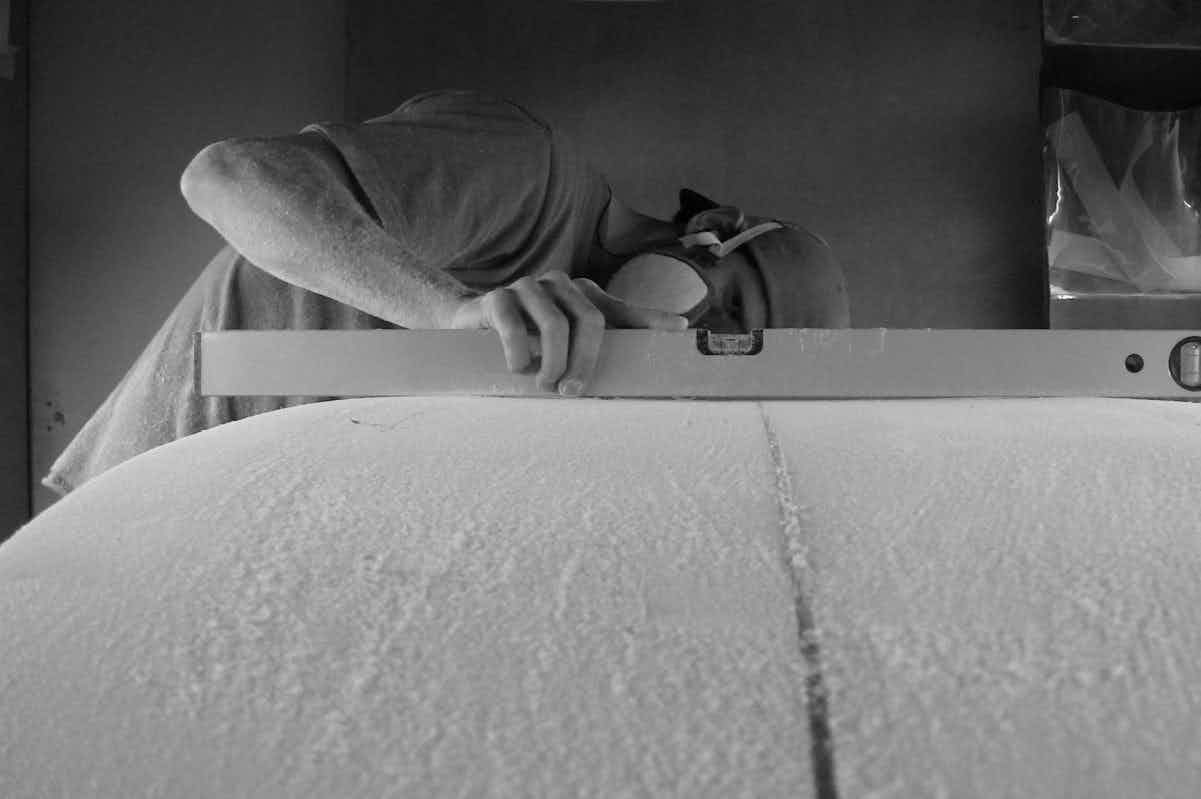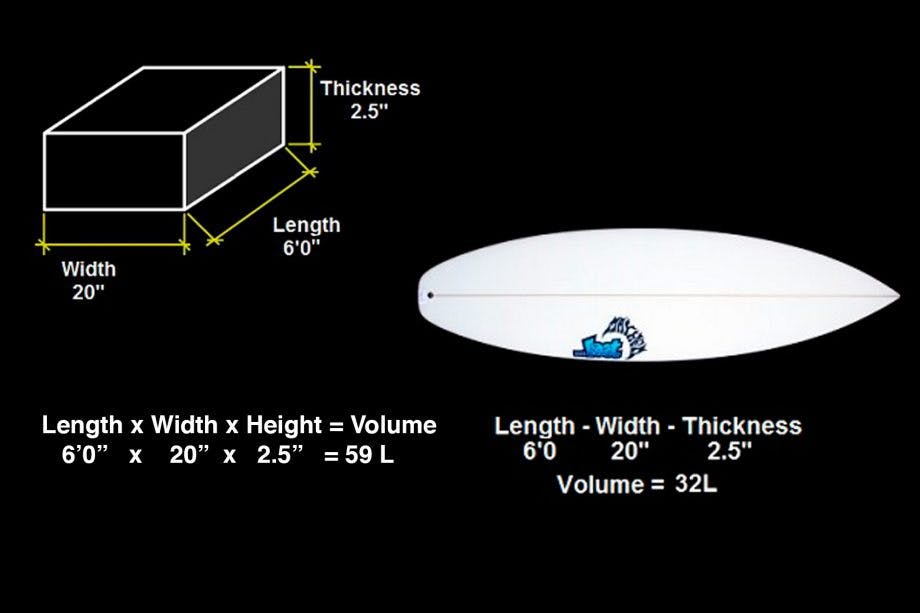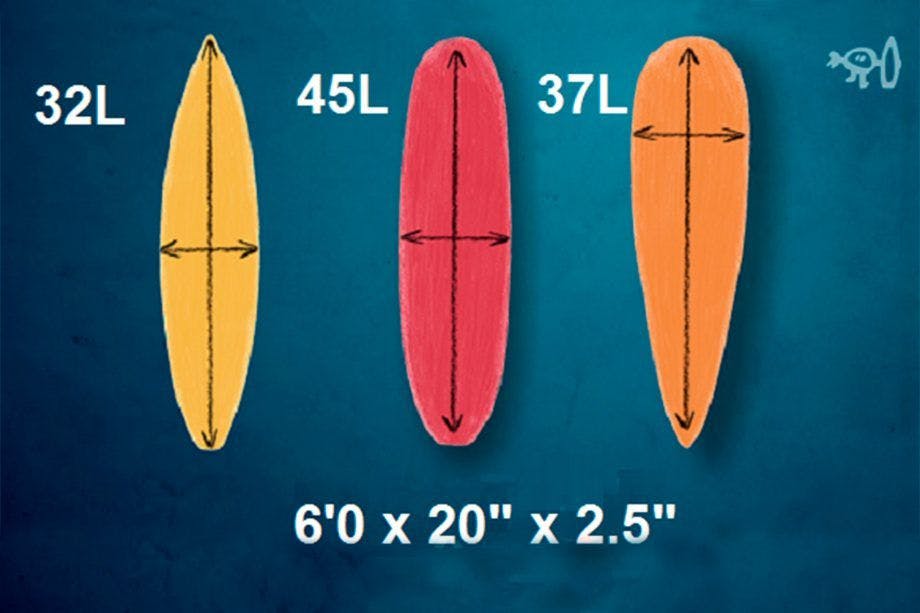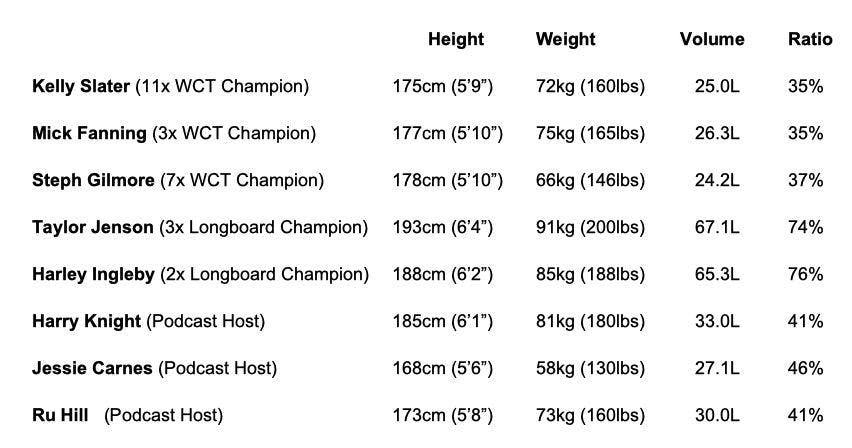Surf CoachingVolume to Weight Ratios (Updated)

This is an updated version of one of the most popular articles we’ve published in the Surf Simply Magazine. The original article was written in response to some questions from our podcast listeners but has now been updated with our most current thinking on the subject. You can hear us talking about some of these topics in even more detail in Episode 50 of the Surf Simply Podcast.
What is Volume?

The volume of your board is a measurement of the total amount of space that your board occupies. If your board were a perfect cube, then a simple length x width x height calculation would be all we’d need. However, as your board is full of curves and concaves, the whole thing is a little more complicated. In the past, the only way of knowing was to dunk your board in a bath, and see how much water was displaced and this is why we normally measure surfboard volume in Cubic Litres rather than Cubic Inches.

Nowadays with most boards designed using computer software, it’s easy to calculate the volume of a finished board, and most of the leading brands display the volume of their boards both on their websites, and increasingly on the surfboard itself. As some ballpark figures, an average shortboard would probably be around 25-35 Litres, while a 7’ funboard would be between 40-50L. A longboard might go from 60-100L, and a SUP could easily top 250L.
Why is Volume Important?
Volume matters because it gives us a realistic idea of how big our boards are. Ever since the “Retro Revolution” of the early 2000s, people have been riding an increasingly diverse range of surfboards, and now the standard 3 dimensions (length, width and thickness) don’t give us enough information to decide if a board will work for us or not, and you can shape 3 boards with the same 3 dimensions, that look and surf very differently.

3 Surfboards, identical dimensions, but very different volumes.
In reality, the thing that volume really tells us is how “buoyant” the surfboard will be, and therefore how well the board will float you in the water. This matters because the higher a board floats you out of the water, the less drag your body will create as you paddle, and so the faster you’ll be able to move. The faster you can paddle, the more waves you can catch, and the less steep those waves need to be in order to catch them. However, the volume of the board is only half the equation, the other part is the weight of the surfer, as a heavier surfer will need more volume to create the same buoyancy.
This brings us to the important ratio between a surfer’s weight in Kilograms and a surfboard’s volume in Litres, which we’ve decided to describe as a percentage, as we think this is the most intuitive way to express these ratios. As an example, an 80kg surfer riding a 40L board would have a ratio of 50%, while a 40kg surfer on the same board would be a ratio of 100%. Here are a few more examples:

What do I do with this Information?
An excellent question. There are no hard and fast rules when it comes to choosing a surfboard. Many people have learnt from day one on tiny shortboards, while others have purposely chosen to only surf 9ft+ longboards, and individuals from both groups have gone on to be world champions. There will always be a huge amount of subjectivity in the final decision, and a board that one person loves may not click with another.
With all that said, you should not view any size of board as a “goal”, you should view a manoeuvre as a goal. A misconception that has plagued surfing for decades is the idea that a smaller board = a better surfer, and too many people view the size of their board, or lack thereof, as a badge of their ability in the water. The problem is that while a smaller board is, in theory, easier to turn than a bigger one, it is also easier to force bad technique on, which long term will hold you back far more than those extra 10 litres ever could. A board that is too small will paddle slow, catch waves late, bog down in turns, and generally make your surfing look terrible. A board that is too big on the other hand has only one downside; if your technique is poor, you can’t cheat and try to torque the board round with your upper body. Smaller boards let you trim turns more easily, which can fool you into thinking you’re carving turns better, but learning to carve turns is actually harder on a low volume board because you have less speed & lift.
Devon Howard demonstrating how good technique, not low volume, is the key to great surfing.
Surfing is meant to be fun above all else, but it can also be one of the most frustrating sports to learn. The high degree of technical precision required, combined with the relatively low repetition rates we get per session and the constant variations in our playing surface, can make developing new techniques hugely challenging. Consequently, we need to do everything we can to ensure that our success-to-failure ratio doesn’t drop too low and take away the fun.
In our experience, the most common reason for frustration in the water is using surfboards that don’t allow for errors when working on new techniques. Whatever the skill is, you don’t want minor mistakes to cost you the whole wave, because this will either push you towards “safety surfing”, or leave you feeling defeated, and either way, your development will quickly plateau. Surfing bigger boards after an injury a few years ago, did more for my surfing than anything else, as it forced me to re-evaluate how I was using my body, and what I needed to change.
So here’s what you should do; use this information as a starting point, to help you choose a board that will help you work on the techniques you want to add to your repertoire. There are lots of “Volume Calculators” out there, but they’re often orientated towards shortboarding, or too vague to be helpful, so we decided to create our own.
We have taken our combined experience of thousands of hours of coaching and then used the levels from our ‘Tree of Knowledge’ to create suggested volume-to-weight ratios for learning different skills. Our chart is not designed to tell you what board size is “correct” for you; instead, it will show the point at which, when practising a new skill, the success-to-failure rate is likely to cause frustration.

So, however experienced a surfer you are, if you’re trying to improve your angled take-offs, you can see on the ‘Tree of Knowledge’ that it’s a Level 2 skill. Now while you could learn, or improve upon these skills using any board, in our experience you’ll improve faster and have more fun if you ride a board within the minimum ratio suggested for Level 2 skills. When you go back to free surfing, you can ride whatever board you normally surf, but hopefully with an improved angled take-off.
We have a fully interactive version of the Volume to Weight Chart Here
Volume is not the be-all and end-all of surfboard design, but it is the most accurate way to compare the huge range of boards that are now on the market. If you’d like to learn more about how a surfboard works, check out this article. Otherwise, find a good volume that suits your fitness, ability and comfort level in the surf, and see what boards you can find in that range. Then, if you have to choose between a few, always take the bigger board, you won’t regret it. Like the Rob Machado says “Foam is your friend.”